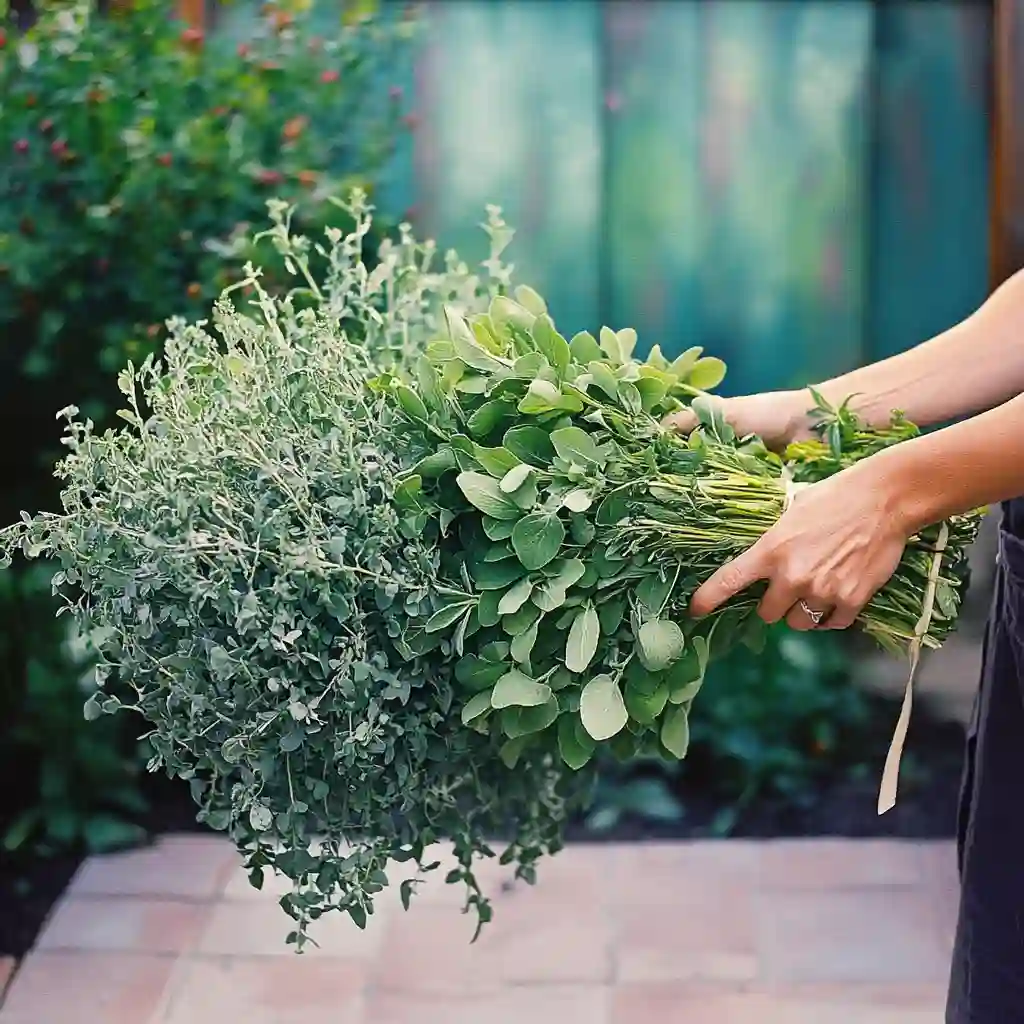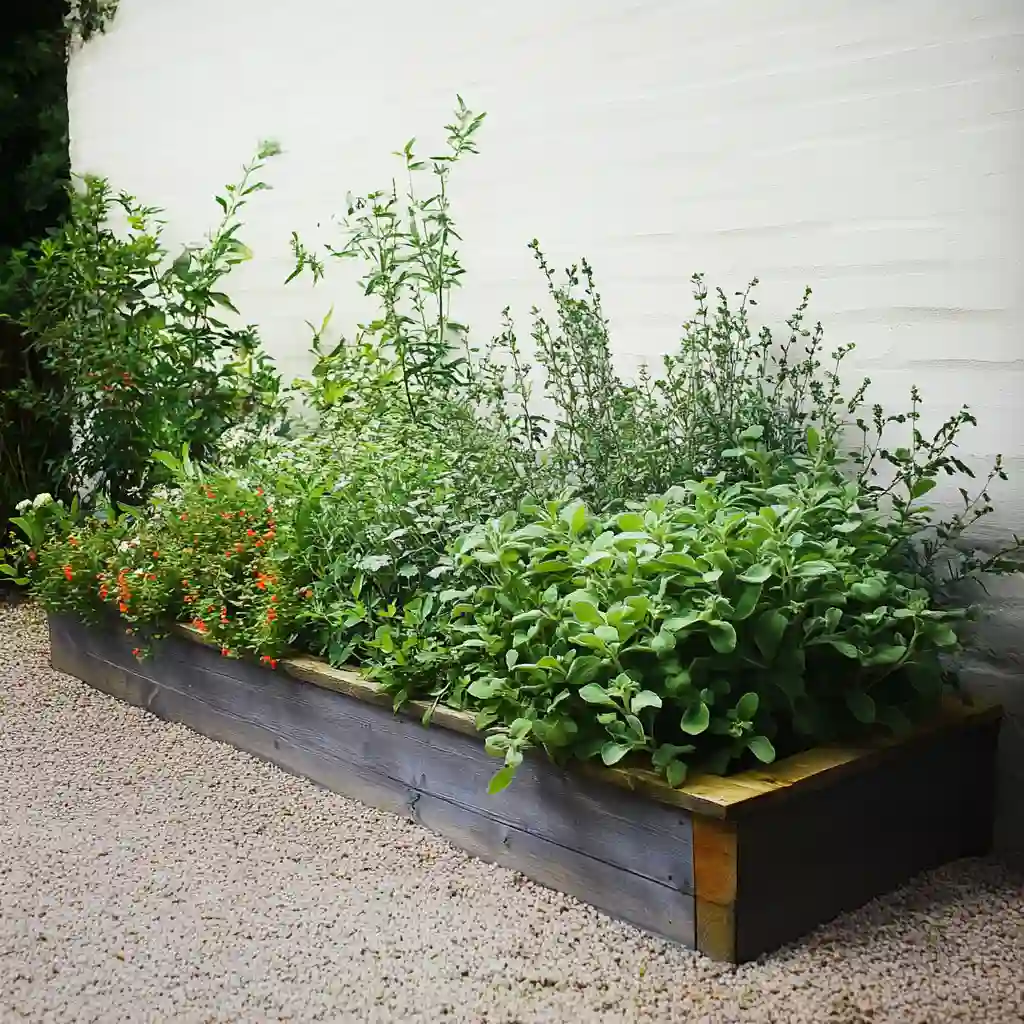Starting an herb garden is one of the most rewarding—and achievable—steps you can take as a new gardener. Whether you dream of snipping fresh basil for pasta, brewing soothing cups of mint tea, or finally banishing store-bought rosemary forever, herbs are the perfect entry point into the gardening world. They’re forgiving, fast-growing, and deliver big flavor in small spaces.
Learning how to start an herb garden doesn’t require a green thumb, just a little knowledge and the right setup. In this guide, we’ll walk you through everything you need to know—from choosing the best herbs to creating the ideal environment for them to thrive organically. You’ll even learn how to avoid common mistakes like using poor soil or buying the wrong plants.
Quick Facts & Best Herbs to Grow in Your Herb Garden
🌿 Quick Facts About Herb Gardening
- Sunlight Needs: Most herbs thrive with 6–8 hours of sunlight daily.
- Soil Preference: Well-draining, moderately fertile soil is key.
- Watering: Herbs generally prefer to dry out slightly between waterings.
- Container-Friendly: Many herbs grow well in pots and raised beds.
- Harvest Time: Many can be harvested just weeks after planting.
🌱 The Best Herbs to Start With
Not all herbs are created equal—some are better suited for beginners due to their resilience, fast growth, or low-maintenance nature. Here’s a breakdown of top-performing herbs categorized by family, which can help you group them together for similar care:
🌸 Lamiaceae Family (Mint Family) – Sun-lovers & drought-tolerant
These herbs love full sun and drier soil conditions, making them perfect for raised beds or containers with good drainage.
- Rosemary – Evergreen and aromatic; great for roasting.
- Thyme – Tiny leaves, big flavor; great for meats and veggies.
- Oregano – A must for Italian cooking.
- Sage – Beautiful and hardy; thrives with little water.
- Marjoram – Similar to oregano but sweeter and milder.
- Basil – Loves heat and regular pinching for bushy growth.
- Lavender – Fragrant and ornamental; well-draining soil a must.
- Lemon Balm – Sweet citrus scent; great in teas and salads.
🌿 Apiaceae Family (Carrot Family) – Likes cooler temps & regular water
These herbs prefer slightly richer soil and more consistent moisture.
- Cilantro – Fast-growing but quick to bolt in heat.
- Parsley – Great as a garnish or green; slow to start from seed.
- Dill – Delicate and feathery; attracts pollinators too.
🌼 Asteraceae Family (Daisy Family) – Dual-purpose beauty and flavor
Not just pretty faces—these herbs are also medicinal and culinary stars.
- Chamomile – Gentle tea herb; attracts beneficial insects.
- Calendula – Bright flowers with healing properties.
- Marigold – Pest deterrent with edible petals.
🧅 Alliaceae Family (Onion Family) – Tough and versatile
These herbs are super easy to grow and tolerate a range of conditions.
- Chives – Mild onion flavor; great in eggs, dips, and more.
🧠 Pro Tip: Group Herbs by Family for Better Results
Because herbs within the same family often have similar needs, grouping them in your garden makes watering, soil prep, and sunlight exposure much easier. For example:
- Put drought-tolerant Lamiaceae herbs together in a sunny, well-drained container.
- Keep moisture-loving Apiaceae herbs in a separate area with richer soil and a bit more shade.
Ideal Growing Conditions for Your Herb Garden
Creating the right environment is essential for a flourishing herb garden. While herbs are generally low-maintenance, giving them the right conditions from the start will set you up for healthy, productive plants that provide continual harvests all season long.
☀️ Sunlight Requirements
Most culinary herbs originate from the Mediterranean or temperate regions, meaning they love sunlight—and lots of it.
- Full Sun (6–8 hours/day): Rosemary, thyme, oregano, sage, basil, and lavender.
- Partial Sun (4–6 hours/day): Mint, lemon balm, parsley, cilantro, dill, and chives.
- Shade-Tolerant (2–4 hours/day): Some mints and chives can tolerate light shade, but they may grow slower.
Pro Tip: South-facing gardens or patios receive the most sun. If you’re growing indoors, a sunny windowsill or a grow light will do the trick.
🌱 Soil Conditions
Herbs thrive in well-draining, loose soil with moderate fertility. Heavy, clay soil holds too much moisture and can cause root rot, while sandy soils may drain too quickly and lack nutrients.
- Ideal Soil pH: Between 6.0 and 7.5.
- Recommended Mix for Containers:
- 50% high-quality organic potting mix
- 30% compost
- 20% perlite or coarse sand (for drainage)
Avoid over-fertilizing herbs—too much nitrogen can result in lush growth but weak flavor. Stick with a balanced organic fertilizer if needed, or amend your soil with compost once or twice per season.
💧 Watering Needs
The watering schedule varies depending on the herb family and environment, but one rule applies across the board: don’t overwater.
- Drought-Tolerant Herbs (rosemary, thyme, oregano): Let soil dry out between waterings.
- Moisture-Loving Herbs (parsley, cilantro, basil): Water more frequently, especially during hot weather.
- Check Before Watering: Stick your finger into the soil—if the top inch feels dry, it’s time to water.
Pro Tip: Use containers with drainage holes and a water tray to prevent soggy roots.
🌡️ Temperature & Climate
Most herbs prefer warm weather, with temperatures between 65°F to 80°F (18°C to 27°C).
- Frost-Tender: Basil, dill, and cilantro are sensitive to cold and should only be planted after the last frost.
- Hardy Herbs: Rosemary, sage, and thyme can tolerate cooler temps and even survive mild winters outdoors with some protection.
If you’re in a cooler climate, consider starting herbs indoors early or keeping them in containers that can be moved as temperatures shift.
Step-by-Step Guide to Planting Your Herb Garden
Now that you know the best herbs to grow and the conditions they love, it’s time to actually plant your herb garden. Whether you’re working with a backyard bed, balcony pots, or a sunny windowsill, this step-by-step guide will help you get growing right away.
🪴 Step 1: Choose Your Location
Pick a spot that gets at least 6 hours of direct sunlight per day. For container gardens, choose portable pots so you can follow the sun as needed. Indoors, aim for a south- or west-facing window, or use LED grow lights if sunlight is limited.
🌿 Step 2: Select the Right Herbs for Your Space
Start small—choose 3 to 5 herbs based on what you love to cook with and what fits your environment. For example:
- Hot, sunny spot: Basil, rosemary, thyme, oregano.
- Partially shaded balcony: Mint, parsley, lemon balm, chives.
Make sure to group herbs by similar needs (sunlight, soil, water) for better success.
🧂 Step 3: Choose Containers or Beds
You can grow herbs in:
- Raised beds: Best for larger outdoor spaces.
- Window boxes: Great for patios or apartment balconies.
- Pots or planters: Look for containers with drainage holes and at least 6 inches deep.
Pro Tip: Use larger containers for better moisture retention and root space—small pots dry out fast and can stress your herbs.
🧵 Step 4: Prepare the Soil
Use a light, well-draining soil mix:
- Combine potting soil + compost + perlite/sand for containers.
- In raised beds, mix topsoil with compost and organic matter.
Add a handful of worm castings or slow-release organic fertilizer if starting with nutrient-poor soil.
🌱 Step 5: Plant Your Herbs
You can start herbs in two ways:
From Seed:
- Ideal for: Basil, cilantro, dill, parsley.
- Follow seed packet instructions for spacing and depth.
- Keep soil moist until germination.
From Transplants:
- Ideal for: Rosemary, thyme, sage, oregano (these can be tricky from seed).
- Gently loosen the root ball and plant at the same depth as the container.
- Water thoroughly after planting.
💦 Step 6: Water Gently & Regularly
Water right after planting and then:
- Check soil moisture daily for new transplants or seedlings.
- Water when the top 1 inch of soil feels dry.
- Be consistent but avoid soggy soil.
✂️ Step 7: Label & Monitor
Use plant markers to keep track of each herb, especially when planting from seed. Check for pests, overwatering, or signs of nutrient deficiency weekly.
Maintenance & Ongoing Care for a Thriving Herb Garden
Your herbs are planted—great job! But to keep them happy, healthy, and producing tons of fresh flavor, a little regular care goes a long way. Fortunately, herb maintenance is minimal compared to many other garden plants. Here’s how to keep your herb garden thriving all season long.
✂️ Pruning & Harvesting
One of the best ways to care for herbs is to use them! Regular harvesting encourages fuller, bushier growth and prevents herbs from going to seed too early.
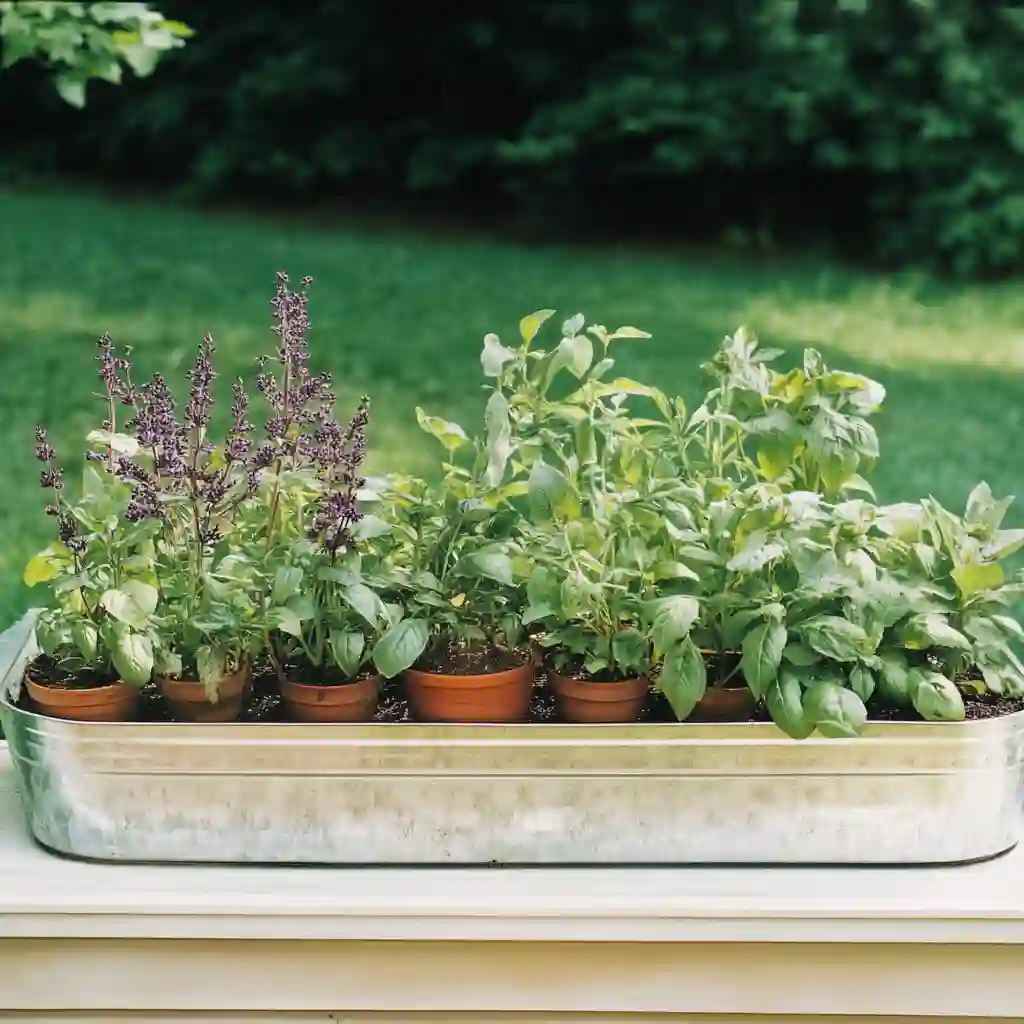
- Basil: Pinch off the top few sets of leaves every week to prevent flowering (bolting) and keep the plant producing.
- Thyme, oregano, mint: Harvest by snipping sprigs just above a leaf node. This encourages branching.
- Parsley, cilantro: Cut outer stems at the base, allowing new inner growth to mature.
- Sage, rosemary: Take small clippings regularly, but avoid cutting back more than one-third of the plant at a time.
Pro Tip: Never harvest more than ⅓ of a plant at once—this gives it time to recover.
💧 Watering Wisely
Watering is one of the most common areas where herb gardeners go wrong. Overwatering leads to root rot, while underwatering can stress your plants.
- Morning is best for watering, allowing moisture to soak in before midday heat.
- Water at the base of the plant to avoid disease caused by wet leaves.
- Mulch around your herbs (especially in raised beds) to retain moisture and reduce weeds.
Use self-watering containers or water trays for container-grown herbs that tend to dry out quickly.
🌿 Feeding Your Herbs
Most herbs are light feeders—over-fertilizing can reduce their flavor. If your herbs are looking pale or struggling:
- Apply diluted fish emulsion or compost tea every 3–4 weeks during the growing season.
- Top-dress containers with fresh compost mid-season for a nutrient boost.
Avoid high-nitrogen fertilizers; they promote leaf growth at the expense of essential oils (and flavor!).
🍂 Deadheading & Bolting Prevention
Some herbs (like basil and cilantro) will bolt—meaning they flower and go to seed—especially in hot weather.
- Remove flower buds as soon as you see them to prolong leaf production.
- If a plant bolts, you can often let it go to seed and collect seeds for next season.
❄️ Seasonal Considerations
- Perennial herbs (thyme, oregano, rosemary, sage) can be pruned lightly in late summer and overwintered in mild climates.
- Annuals (basil, dill, cilantro) will die back with the first frost—plan to harvest or preserve before then.
You can bring tender herbs indoors in containers before the first frost for continued harvests.
Common Pests & Diseases (and How to Prevent Them Organically)
Even though herbs are among the least pest-prone plants in the garden—thanks to their strong scents and essential oils—they’re not immune. Knowing how to spot and manage common issues early will keep your herb garden healthy and thriving, without reaching for synthetic sprays.
🐛 Common Herb Garden Pests (and Natural Fixes)
1. Aphids
- Signs: Clusters of tiny green, black, or white bugs on new growth.
- Damage: Leaf curling, sticky residue (honeydew).
- Organic Fix:
- Spray with neem oil or insecticidal soap.
- Introduce ladybugs or lacewings as natural predators.
- Blast with water to dislodge.
2. Whiteflies
- Signs: Tiny white moth-like insects that fly up when you touch the plant.
- Damage: Yellowing leaves, stunted growth.
- Organic Fix:
- Use yellow sticky traps.
- Spray undersides of leaves with neem oil weekly.
3. Spider Mites
- Signs: Tiny specks or webbing on leaves.
- Damage: Yellow or bronze discoloration.
- Organic Fix:
- Increase humidity—mites hate moisture.
- Apply neem oil or insecticidal soap.
4. Slugs & Snails
- Signs: Irregular holes in leaves, slime trails.
- Organic Fix:
- Use beer traps or copper tape around containers.
- Hand-pick in the evening or early morning.
5. Cutworms & Caterpillars
- Signs: Chewed leaves, missing seedlings.
- Organic Fix:
- Sprinkle diatomaceous earth around plant bases.
- Use floating row covers for seedlings.
- Hand-remove caterpillars when spotted.
🍄 Common Herb Diseases (and Prevention)
1. Powdery Mildew
- Signs: White, powdery coating on leaves (especially on mint or basil).
- Cause: High humidity and poor air circulation.
- Prevention:
- Provide adequate spacing.
- Water at soil level—not overhead.
- Use a homemade milk spray (1 part milk to 3 parts water) as a preventative.
2. Root Rot
- Signs: Wilting despite moist soil, mushy roots.
- Cause: Overwatering or poor drainage.
- Prevention:
- Use containers with drainage holes.
- Let the topsoil dry out between waterings.
- Amend heavy soil with sand or perlite.
3. Damping Off (Seedlings)
- Signs: Seedlings collapse at the base.
- Cause: Fungal pathogens in overly wet soil.
- Prevention:
- Use sterile seed-starting mix.
- Don’t overwater young seedlings.
- Improve air flow and avoid overcrowding.
🧘♀️ General Prevention Tips
- Keep your garden clean and tidy—remove dead leaves and weeds.
- Water in the morning to avoid creating a moist, overnight environment.
- Rotate herbs yearly if growing in the ground to prevent soil-borne disease build-up.
- Practice companion planting (e.g., marigolds with herbs) to repel pests naturally.
Bonus Expert Tips & Frequently Asked Questions (FAQs)
You’ve learned the fundamentals—now let’s level up your herb garden with a few expert tips that can boost flavor, yield, and long-term success. Plus, we’ll cover some of the most common questions new herb gardeners have along the way.
🌟 Expert Tips for Herb Garden Success
1. Pinch Early, Pinch Often
Don’t be afraid to harvest herbs regularly, even when they’re small. This encourages branching and prevents premature flowering, especially for fast-growers like basil and mint.
2. Don’t Plant Mint with Other Herbs
Mint is a space hog. It spreads aggressively and can easily overtake nearby plants. Grow it in its own container to keep it contained and manageable.
3. Rejuvenate Woody Herbs
Rosemary, thyme, and sage can get woody over time. Prune them back lightly in early spring to stimulate new, tender growth.
4. Grow Herbs Near the Kitchen
You’ll use them more if they’re accessible. A pot of basil or chives near your kitchen door or windowsill makes all the difference in your cooking routine.
5. Dry or Freeze Surplus Herbs
Preserve your harvest by air-drying bundles upside down or freezing chopped herbs in olive oil using ice cube trays. You’ll have fresh flavor at your fingertips year-round.
💬 Frequently Asked Questions (FAQs)
Q: Can I grow herbs indoors all year round?
Yes! Many herbs do great indoors, especially if you have a sunny south-facing window or use a grow light. Basil, chives, mint, and parsley are some of the best for indoor growing.
Q: How long do herbs live?
- Annuals (e.g., basil, cilantro, dill): Live for one season.
- Biennials (e.g., parsley): Last two seasons (leafy growth in year one, flower and seed in year two).
- Perennials (e.g., rosemary, thyme, oregano): Return year after year with proper care.
Q: Can I grow herbs from kitchen scraps?
Absolutely. You can root cuttings of basil, mint, oregano, and rosemary in water, then transplant them to soil. It’s a fun, free way to expand your herb garden.
Q: Why is my basil turning yellow?
Likely causes:
- Overwatering
- Lack of sunlight
- Nutrient deficiency Fix the underlying issue and trim affected leaves to encourage recovery.
Q: What herbs repel pests naturally?
Many herbs act as natural pest deterrents:
- Basil repels mosquitoes and flies.
- Lavender keeps moths and fleas away.
- Rosemary and sage deter cabbage moths and beetles.
- Chives help repel aphids and carrot flies.
🌿 Conclusion
Starting an herb garden is one of the most beginner-friendly and satisfying ways to grow your own food. With just a bit of knowledge—like understanding plant families, setting up the right growing environment, and learning how to care for your herbs—you can grow a thriving, organic herb garden that provides fresh flavor, beautiful greenery, and big confidence in your gardening skills.
From fragrant basil to hardy rosemary, the joy of snipping herbs straight from your garden to your kitchen is unmatched. Remember the golden rule: learn first, buy last—and you’ll avoid the most common mistakes that trip up new gardeners.
Whether you’re growing in a container, windowsill, or raised bed, your herb garden is more than just a pretty patch of green—it’s a living pantry, a wellness tool, and a gentle nudge toward a more self-sufficient lifestyle.
So get your hands in the dirt, take that first step, and watch as your green thumb grows—one herb at a time.
🌿 Love gardening inspiration? Follow me on Pinterest for bold plant ideas, tips, and seasonal color!
More Posts
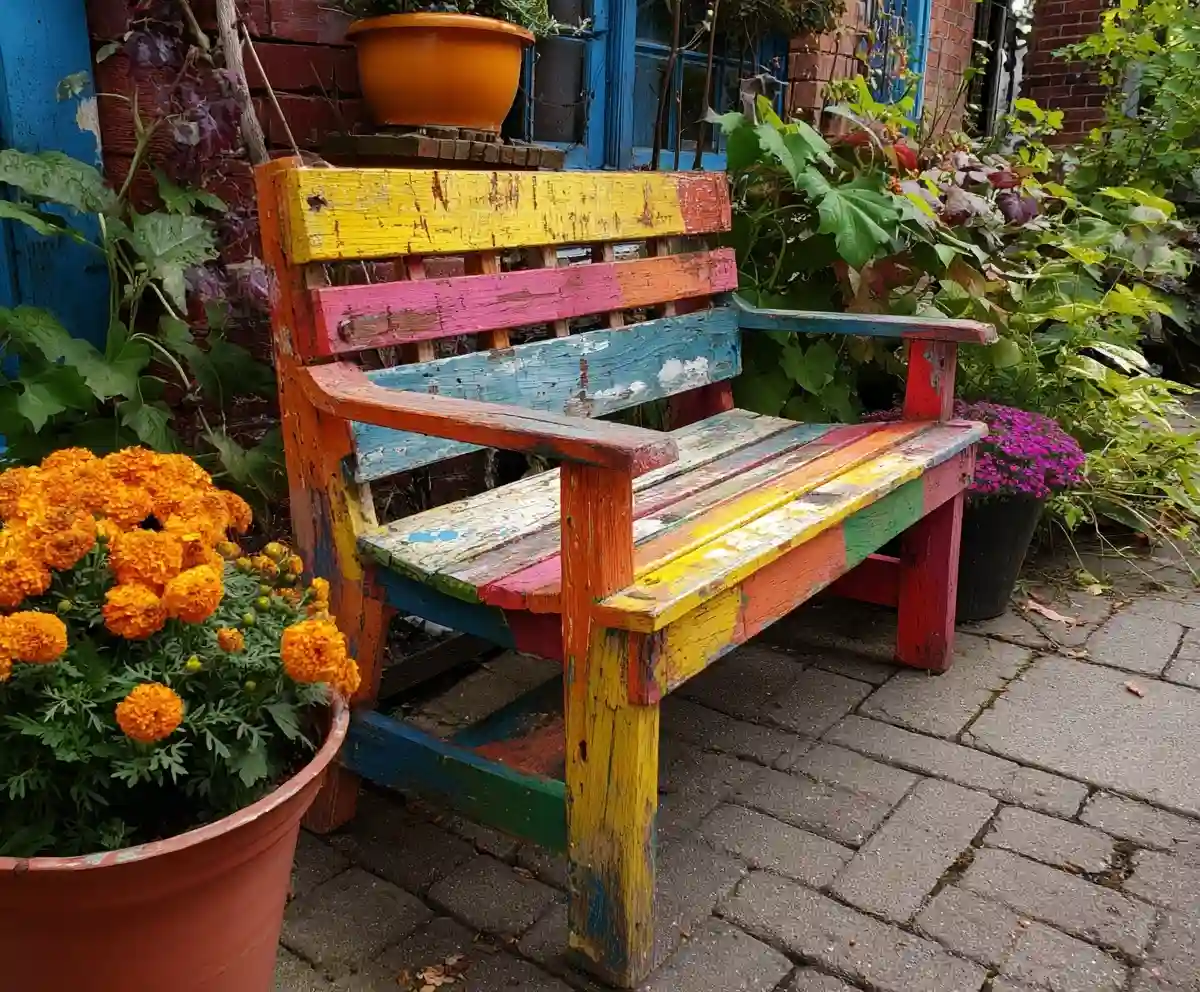
19+ Budget-Friendly Backyard Makeover Ideas
Backyard makeover ideas can turn even the most ordinary outdoor space into a warm, inviting retreat—without draining your wallet.
Read More →
21 Stunning & Simple DIY Clematis Trellis Designs
DIY clematis trellis designs are a beautiful way to blend creativity with function in your garden.
Read More →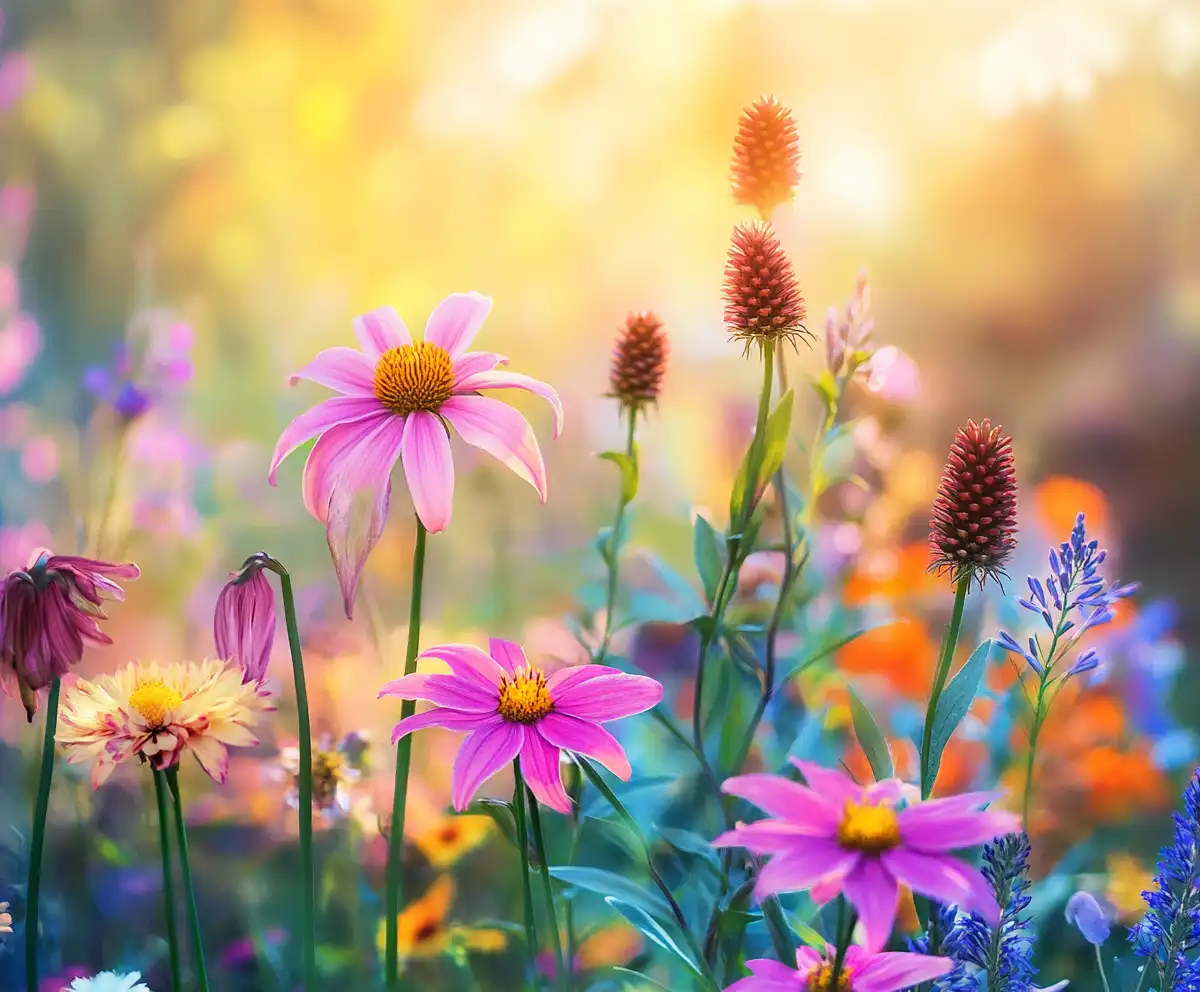
12 Full Sun Perennials That Bloom All Summer
Explore a selection of hardy perennials that flourish and bloom beautifully in full sun throughout the summer.
Read More →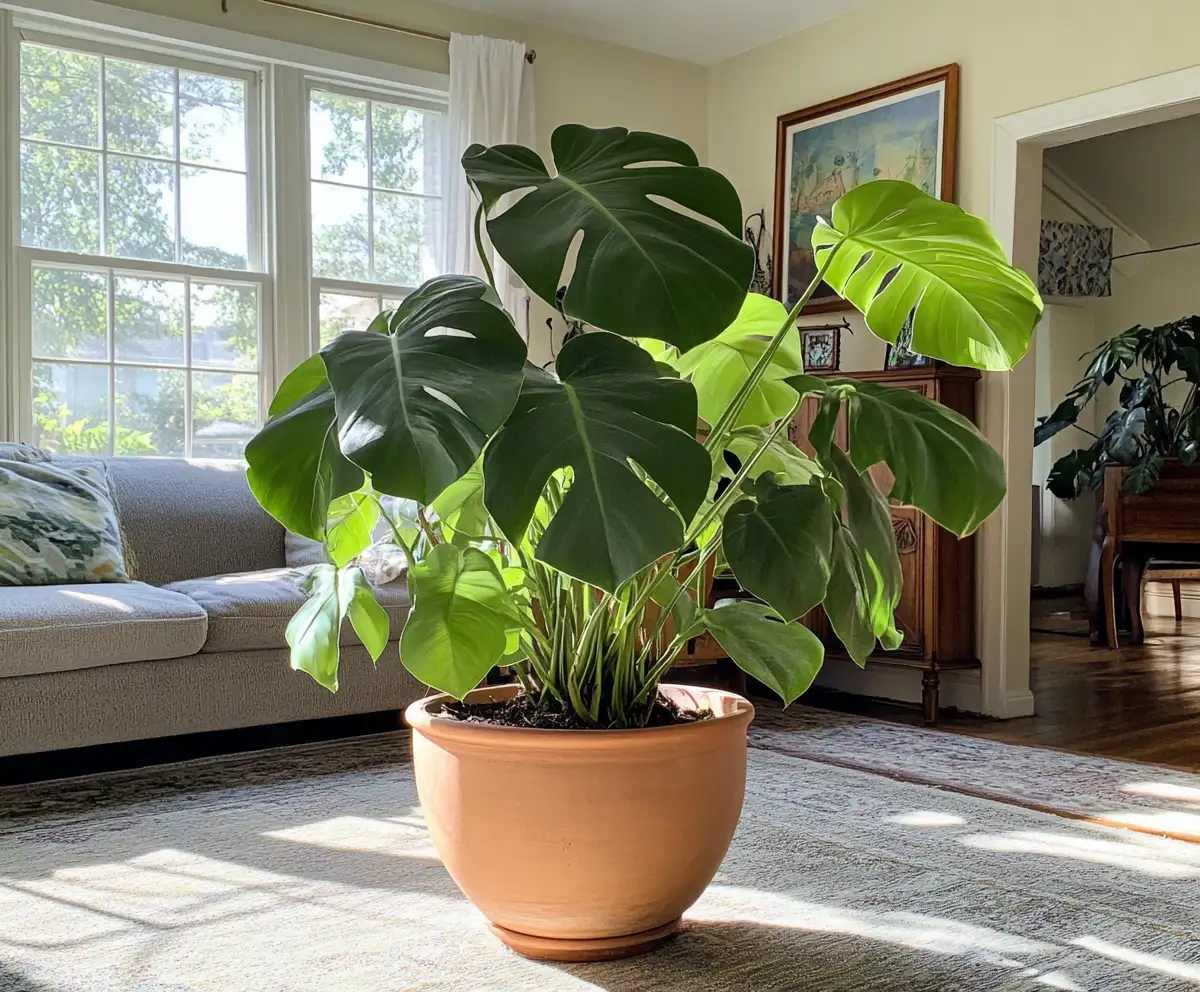
Houseplants for Living Room
Find the perfect houseplants to brighten and purify your living room while adding a touch of nature indoors.
Read More →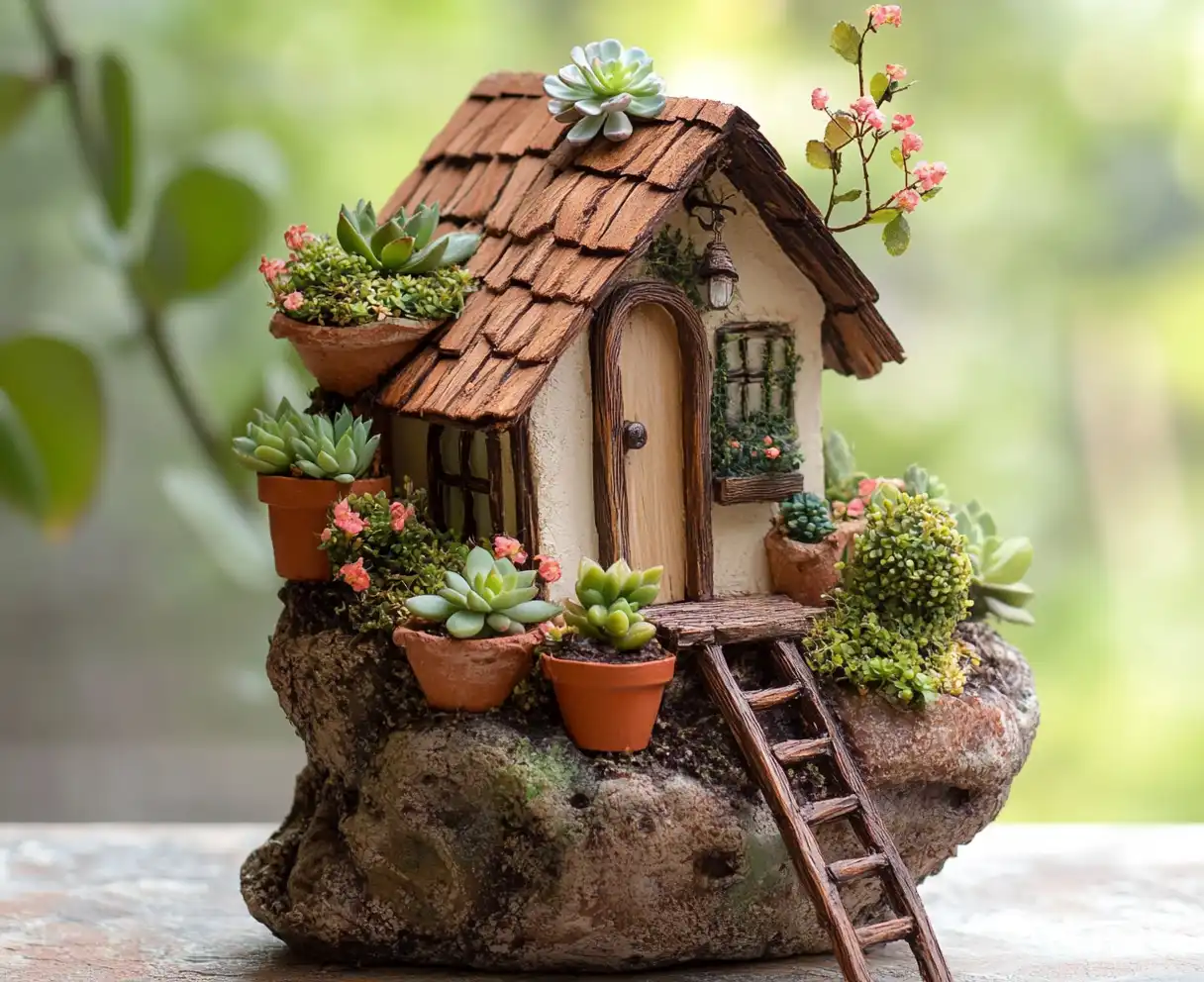
Backyard Play Area for Kids
Create a fun and safe backyard play area for kids with these inspiring design ideas and tips.
Read More →
Top Privacy Trees
Discover top tree varieties that provide natural privacy and enhance your outdoor space.
Read More →
